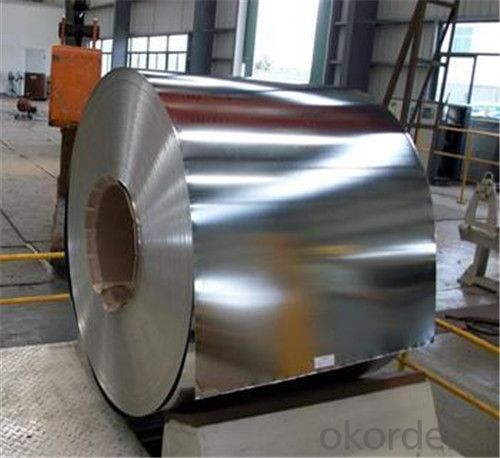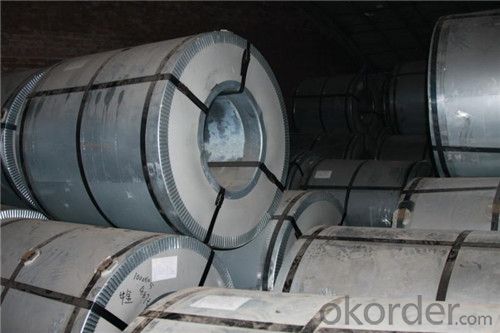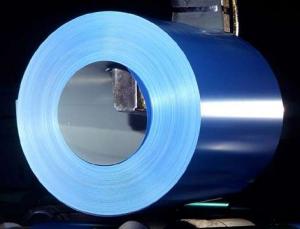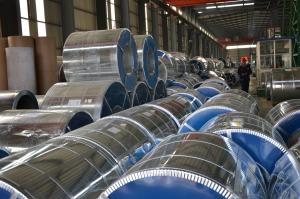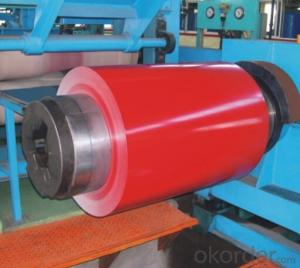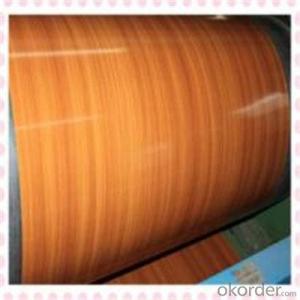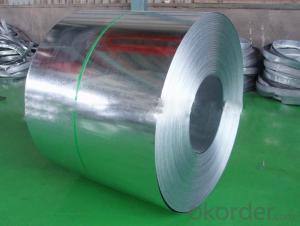PPGI Cold Rolled Hot Dipped Galvanized Steel Coils
- Loading Port:
- Shanghai
- Payment Terms:
- TT OR LC
- Min Order Qty:
- 36 m.t.
- Supply Capability:
- 30000 m.t./month
OKorder Service Pledge
OKorder Financial Service
You Might Also Like
BASE SUBSTRATE | Hot dip galvanized steel (HDGI), ZINCALUME STEEL COIL |
GRADE | SGCC,ENG10142, DX51D, ASTM A653 |
ZINC COATING | 30-200g |
COIL WEIGHT | 3-7TON |
INTERNAL DIAMETER(ID) | 508mm |
THICKNESS | 0.2-0.8 mm |
WIDTH | 914-1250mm |
FINISHING | SMOOTH OR MATTE |
PATTERN | MARBLE GRAIN OR WOOD GRAIN |
PAINT | EXPOXY, POLYESTER, PVDF |
TOP LACQURE COATING | >20 um |
BACK LACQURE COATING | 7 um |
CAPABILITY | 100000 TON per year |
QUALITY QURANTEE | 10 YEARS OF OUTDOOR USING FOR PE |
Applications of Prepainted Galvanized Steel Coil:
1) Buildings and constructions: roofing, ceilings, gutters, venting lines, indoor decorations, window frames, etc.
2) Electrical appliances: computer shells, washing machines, refrigerators, dehumidifiers, video recorders, water heaters, etc.
3) Agricultural equipments: troughs, feeding tools, agricultural driers, irrigation channels, etc.
4) Vehicle parts: back-seat plates of buses and trucks, conveying systems, oil tanks, etc.
Coating Chief Feature
| Project | Pencil hardness | Reverse impact | T bending | Cupping test | MEK cleaning |
| Front/back | ≥ H/2H | ≥ 9J/6J | ≤ 3T/5T | ≥ 6mm/4mm | ≥ 100time/50time |
Structure of GI/PPGI
| Item | Thickness | Type | Feature |
| Laminated film | 50μm | Polyethylene | Protecting from scratchs and contamination (option) |
| Top coat | 20μm | Polyester Fluorine | Chemical resistance and formability |
Primer coat | 5μm | Polyester | Workability, corrosion resistance and adhesion to the primer coating |
| Chemical treatment | 1μm | Chromate | Good adhesion and corrosion resistance |
| Substrate | 0.2mm-1.2mm | GI.GL,AL | GI.GL,AL |
| Back coat |
5±2μm |
Epoxy | Corrosion resistance and adhesion to the substrate |
- Q: How are steel coils used in the HVAC industry?
- Steel coils are commonly used in the HVAC industry for heat transfer purposes. They are typically used in air conditioning and refrigeration systems to transfer heat between the refrigerant and the surrounding air. The coils are designed to efficiently absorb or release thermal energy, allowing for effective cooling or heating.
- Q: 7850kg/cu.m density is typical for all type of steel? like reibar, I- beam and so on
- 90% of the steels used today are plain mild carbon steels consisting of iron with less than 1% carbon content and as such have a density of about 7750 kg/cubic meter. Some special steels which have a significant percentage of alloying elements such as chrome or manganese or other elements will have greater density bringing the steel up to about 8000 kg / cubic meter. There are a greater many factors influencing the exact density of a steel. Even for steels of exactly the same content of iron , carbon and other alloying elements, there may be a difference ( very small mind you ) in density due to work hardening. The difference in this case is due to movement of dislocations which become locked in the grain boundaries and this forms a more dense crystal structure. For this same reason, the theoretical density of steel (which does not take into account dislocations) is greater than the measured density of steel.
- Q: I live in Dubai. I want to make a damascus steel sword and have no idea where to get the steel or what sort of steel I should get.First to adress the access of my steel...I need to get some low carbon and high carbon steel for the Damascus....what sort of steel is recommended for this? Also where would I be able to get my hands on it (Internet options e.g websites or locations)THANKS
- hI Jordan damascus steel is not actually a steel it is a composite material like the damascus rifle barrels the Afghan's use it is made from wire wrapped around an inner mandrel the beaten on an anvil till all the wire becomes one so it is several types of iron and steel beaten together and forged to produce it so it is not something you can actually buy as a material the tribesmen that produce these swords have these secret methods of doing this so there is the first problem. it is not like cast steel which is what most swords are made of it is far more complex in it's construction. so you may need to do a lot of research to find out how. what is a similar idea is the SAMURAI sword that is made up of combining different steels together and forged into a very sharp and capable killing blade.
- Q: How are steel coils protected from chemical damage?
- Steel coils are typically protected from chemical damage through the application of a protective coating or by storing them in a controlled environment to prevent exposure to corrosive substances.
- Q: What is the role of steel coils in the production of storage tanks?
- Steel coils play a crucial role in the production of storage tanks as they are used to construct the cylindrical body of the tank. These coils are cut and shaped into the desired dimensions and then welded together to create a strong and durable structure. The high strength and corrosion resistance properties of steel make it an ideal material for storage tanks, ensuring the safety and longevity of the tanks in various industries such as oil and gas, chemical, and water storage.
- Q: What are the dimensions of steel coils used in automotive component manufacturing?
- The dimensions of steel coils used in automotive component manufacturing vary depending on the specific application and requirements. However, common dimensions include thicknesses ranging from 0.5mm to 3mm and widths ranging from 600mm to 2000mm.
- Q: I do a lot of scrapping and would like to be able to separate stainless steel from regular steel. The magnet test doesn't always work since stainless can be magnetic, but what are some ways that I can for sure tell the difference? Or even something like a sound that they make that may help me to tell the difference.
- Stainless steel uses chromium in its mixture to thwart the affects of corrosion. General steel, or carbon steel, is generally almost completely iron and is used for far greater applications than stainless steel. Stainless steel is used mostly in kitchen appliances, utensils, etc... The best thing I can come up with is to find a way to measure the chromium content of the steel you are looking at. If it's around 3% chromium, it's probably standard steel. If it's somewhere between 10-15% chromium it's probably stainless steel (or even 4% plus). I can't tell you a fast and quick way to test the steel because from my research, it appears there are as many grades and allows of steel as there are uses for steel! There is one test I've seen for home testing surgical steel which is a higher grade stainless steel, that is to put scotch tape on one section of material then soak it in water for a 24 hour period, then let it air dry for 24 hours. You remove the tape and lightly polish the exposed areas to see if there was any discoloration or pitting on the exposed area. This test is mainly for surgical steel jewelry, however stainless steel is supposed to resist rusting more than standard steel, hence it might work for other steel types as well. You may have to read some of the other links below to get some other ideas on how you can test steel to see if it is stainless.
- Q: How are steel coils inspected for dimensional accuracy during processing?
- Steel coils are inspected for dimensional accuracy during processing through various methods such as measuring tape, calipers, laser scanners, or automated vision systems. These tools are used to measure the length, width, and thickness of the coils to ensure they meet the required specifications and tolerances.
- Q: How are steel coils tested for strength?
- Steel coils are tested for strength using a variety of methods such as tensile testing, hardness testing, and impact testing. Tensile testing involves applying a controlled force to the coil until it breaks, measuring the amount of force required to rupture the steel. Hardness testing measures the resistance of the steel to indentation or scratching, providing an indication of its strength. Impact testing evaluates the ability of the steel to absorb energy under sudden loading conditions. These tests help determine the overall strength and quality of the steel coils.
- Q: What are the different types of steel coil surface finish treatments?
- There are numerous options for treating the surface finish of steel coils, each serving a distinct purpose and offering unique qualities. Several common types include: 1. Hot Rolling: This is a fundamental and widely-used treatment method for steel coil surface finish. It involves heating the steel above its recrystallization temperature and then rolling it to achieve the desired thickness. This process yields a rough surface texture. 2. Cold Rolling: In contrast to hot rolling, cold rolling involves rolling the steel coil at room temperature. This treatment produces a smoother surface finish with improved dimensional accuracy and tighter tolerances. 3. Galvanization: Galvanization is a process in which a protective zinc coating is applied to the surface of the steel coil. This treatment not only enhances the appearance, but also provides excellent corrosion resistance, making it suitable for outdoor applications. 4. Electro-Galvanization: Similar to galvanized steel, electro-galvanized steel coil is coated with a layer of zinc. However, this coating is applied through an electroplating process, resulting in a thinner and more controlled coating. 5. Pre-Painting: Pre-painting involves applying a layer of paint or protective coating to the steel coil before it is delivered to the customer. This treatment enhances the appearance and provides additional protection against corrosion. 6. Stainless Steel: The surface finish treatment for stainless steel coils involves passivating the steel to remove any impurities or contaminants on the surface. This process improves corrosion resistance and gives the steel a clean and smooth appearance. 7. Embossing: Embossing is a treatment where a pattern or design is pressed into the surface of the steel coil. This treatment enhances the aesthetic appeal and can provide added grip or texture, depending on the specific design. 8. Brushing: Brushing is a treatment that involves using a fine abrasive material to create a brushed pattern on the surface of the steel coil. This finish provides a unique texture and can help conceal scratches or imperfections. These are just a few examples of the different surface finish treatments available for steel coils. The choice of treatment depends on the specific requirements of the application, such as appearance, corrosion resistance, or functionality. It is crucial to select the most suitable treatment to ensure the desired outcome.
Send your message to us
PPGI Cold Rolled Hot Dipped Galvanized Steel Coils
- Loading Port:
- Shanghai
- Payment Terms:
- TT OR LC
- Min Order Qty:
- 36 m.t.
- Supply Capability:
- 30000 m.t./month
OKorder Service Pledge
OKorder Financial Service
Similar products
Hot products
Hot Searches
Related keywords




